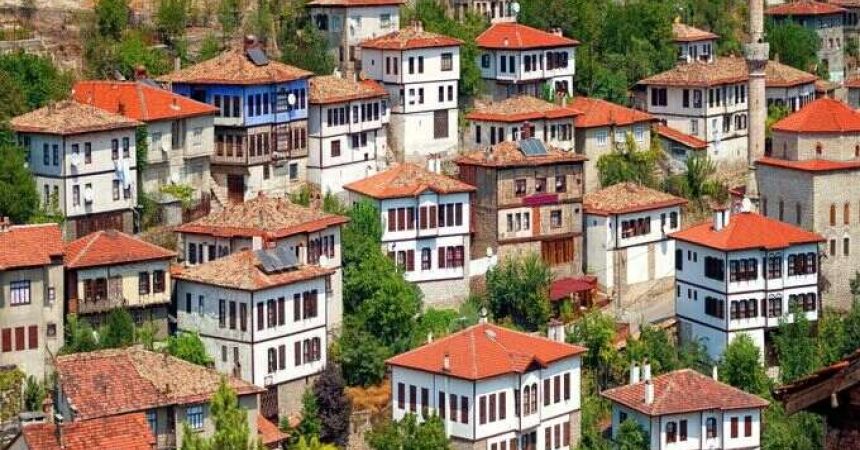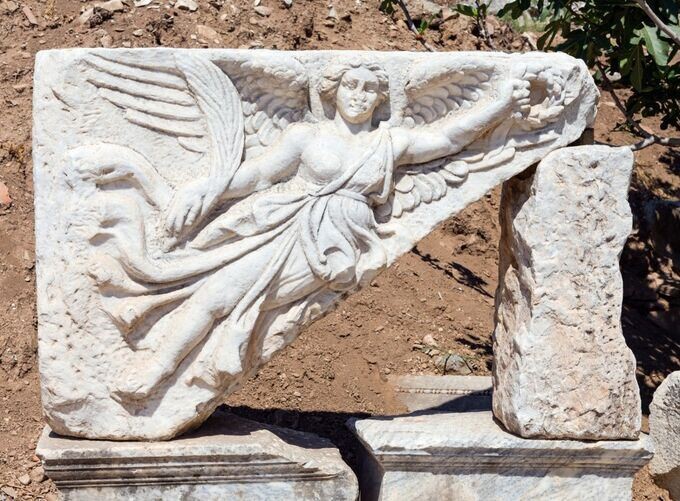
Turkey UNESCO Heritage Sites | Where to Go & What to See
Turkey, a country that bridges Europe and Asia, is a land steeped in history and culture. Its strategic location has made it a melting pot of civilizations, each leaving behind a rich tapestry of heritage. The UNESCO World Heritage Sites in Turkey are a testament to its diverse and storied past, offering a window into ancient empires, architectural marvels, and natural wonders. This guide explores some of the most significant UNESCO sites in Turkey, highlighting their historical importance and what makes them unique destinations.
Historic Areas of Istanbul
Overview Istanbul, formerly known as Byzantium and Constantinople, is a city that has played a pivotal role in the history of both the Eastern and Western worlds. The Historic Areas of Istanbul are a UNESCO World Heritage Site that includes key landmarks showcasing the city’s rich Byzantine and Ottoman heritage.
Key Sites
- Hagia Sophia: This architectural marvel was originally built as a cathedral in 537 CE. It later became a mosque and is now a museum, renowned for its massive dome and stunning mosaics.
- Topkapi Palace: Once the primary residence of the Ottoman sultans, this opulent palace complex offers a glimpse into the grandeur of the Ottoman Empire.
- Blue Mosque (Sultan Ahmed Mosque): Known for its blue Iznik tiles and six minarets, the Blue Mosque is an iconic symbol of Istanbul.
- Hippodrome of Constantinople: An ancient circus that was a social and sporting center of the Byzantine Empire, now a historic park with remnants of its glorious past.
Significance
The Historic Areas of Istanbul reflect the city’s historical importance as a cultural and political hub. The architectural masterpieces in this area symbolize the city's role as a crossroads of civilizations.
Goreme National Park and the Rock Sites of Cappadocia
Overview Cappadocia Tour, located in central Turkey, is famous for its unique landscape of fairy chimneys, cave dwellings, and rock-hewn churches. Göreme National Park is at the heart of this region, showcasing the natural beauty and historical significance of Cappadocia.
Key Sites
- Göreme Open-Air Museum: A collection of rock-cut churches and monasteries adorned with beautiful frescoes dating back to the 10th century.
- Fairy Chimneys: Unique rock formations created by volcanic eruptions and erosion, scattered throughout the region.
- Underground Cities: Ancient subterranean cities like Derinkuyu and Kaymakli, built to protect inhabitants from invasions.
Significance
Cappadocia’s landscape and historical sites illustrate the region’s geological evolution and the adaptation of early Christian communities to their environment. The rock-hewn churches and underground cities are a testament to human ingenuity and resilience.
Ephesus, Turkey
Overview Ephesus Guided Trip, located near the modern town of Selçuk, is one of the best-preserved ancient cities in the world. It was a major center of commerce and culture in the Roman Empire and is now a significant archaeological site.
Key Sites
- Library of Celsus: An iconic symbol of Ephesus, this grand library was built in 117 CE and is renowned for its impressive facade.
- Great Theatre: An ancient amphitheater with a seating capacity of 25,000, used for gladiatorial contests and theatrical performances.
- Temple of Artemis: One of the Seven Wonders of the Ancient World, although only a few remnants remain today.
Significance
Ephesus offers valuable insights into Roman urban planning, architecture, and daily life. The well-preserved ruins illustrate the city’s historical importance as a major trade and cultural center.
Hierapolis-Pamukkale
Overview
Hierapolis and Pamukkale are a unique combination of natural and man-made wonders. Pamukkale, known as the "Cotton Castle," is famous for its white travertine terraces, while Hierapolis is an ancient spa city built on top of these terraces.
Key Sites
- Travertine Terraces: White terraces formed by the deposition of calcium carbonate from hot springs, creating a stunning natural landscape.
- Hierapolis Theatre: A well-preserved Roman theatre offering panoramic views of the ancient city.
- Ancient Pool (Cleopatra’s Pool): A thermal pool believed to have been a favorite bathing spot of Cleopatra.
Significance
The combination of Pamukkale’s natural beauty and Hierapolis’s historical significance highlights the interplay between nature and human activity. The site has been a center for spa treatments and religious activities for thousands of years.
Mount Nemrut, Turkey
Overview
Mount Nemrut, located in southeastern Turkey, is home to one of the most awe-inspiring archaeological sites in the country. At its summit is the tomb-sanctuary of King Antiochus I of Commagene, featuring colossal statues and a tumulus.
Key Sites
- Colossal Statues: Massive statues of Greek and Persian gods, as well as King Antiochus I, each standing around 8-9 meters tall.
- Tumulus: A large, conical burial mound made of loose rock, believed to cover the tomb of King Antiochus I.
- Terraces: The statues are arranged on terraces, offering panoramic views of the surrounding landscape.
Significance
Mount Nemrut is a testament to the cultural syncretism of the Hellenistic period, blending Greek, Persian, and local influences. The monumental statues reflect the king’s ambition to be remembered as a god and his desire to create a lasting legacy.
Pergamon and its Multi-Layered Cultural Landscape
Overview Pergamon, an ancient Greek city located in modern-day Bergama, was a major cultural and political center during the Hellenistic period. The city is known for its impressive acropolis, temples, and the renowned Pergamon Altar.
Key Sites
- Acropolis: The acropolis of Pergamon is perched on a hill, featuring the remains of palaces, temples, and public buildings.
- Pergamon Altar: Although the original altar is in Berlin, the site of the altar remains a significant historical landmark.
- Asclepion: An ancient healing center dedicated to Asclepius, the god of medicine.

Significance
Pergamon’s architectural and cultural achievements highlight its importance as a center of learning, religion, and medicine. The city’s innovative urban planning and monumental structures reflect its historical significance.
Hattusa: The Hittite Capital
Overview
Hattusa, the ancient capital of the Hittite Empire, is located in modern-day Boğazkale. The site is known for its well-preserved city walls, gates, and temples, offering a glimpse into the life of one of Anatolia’s most powerful civilizations.
Key Sites
- City Walls and Gates: The massive city walls and gates, including the Lion Gate and the King’s Gate, are impressive examples of Hittite architecture.
- Great Temple: The largest and most significant religious building in Hattusa, dedicated to the storm god Teshub.
- Yazılıkaya: An open-air sanctuary with rock-cut reliefs depicting Hittite gods and kings.
Significance
Hattusa provides valuable insights into the political, religious, and architectural achievements of the Hittite civilization. The site’s well-preserved ruins illustrate the city’s strategic importance and its role as a major center of power in ancient Anatolia.
Troy, Turkey
Overview Troy, the legendary city immortalized in Homer’s epic poem "The Iliad," is one of the most famous archaeological sites in the world. Located near the Dardanelles, the site consists of multiple layers of ancient settlements dating back to the Early Bronze Age.
Key Sites
- Schliemann’s Trench: An excavation trench dug by Heinrich Schliemann, revealing layers of the city’s history.
- The Walls of Troy: The impressive defensive walls that have withstood the test of time.
- The Odeon: A small ancient theatre used for musical performances and gatherings.
Significance
Troy’s historical and mythological significance makes it a symbol of ancient civilizations and literary heritage. The site’s archaeological layers provide a chronological record of human settlement and cultural evolution over millennia.
Xanthos-Letoon, Antalya
Overview Xanthos, the capital of ancient Lycia, and its neighboring sanctuary, Letoon, are significant archaeological sites located in southwestern Turkey. The site is renowned for its Lycian tombs, inscriptions, and temples.
Key Sites
- Harpy Tomb: A unique Lycian funerary monument decorated with reliefs depicting mythological scenes.
- Nereid Monument: A monumental tomb built in the style of an ancient Greek temple.
- Letoon Sanctuary: A religious center dedicated to the Lycian gods Leto, Apollo, and Artemis.
Significance
Xanthos-Letoon illustrates the cultural and religious practices of the Lycian civilization and its interactions with Greek and Persian cultures. The site’s inscriptions provide valuable insights into the Lycian language and political history.
Safranbolu, Turkey
Overview Safranbolu, a well-preserved Ottoman town in northern Turkey, is famous for its traditional wooden houses and historic architecture. The town’s unique charm and picturesque setting make it a popular destination for cultural tourism.
Key Sites
- Historic Houses: Safranbolu’s well-preserved Ottoman houses, characterized by their timber-framed construction and distinctive architectural style.
- Cinci Han and Bath: A caravanserai and bathhouse from the 17th century, reflecting the town’s historical importance as a trading center.
- Tokatlı Canyon: A natural attraction offering scenic views and outdoor activities near the town.
Significance
Safranbolu’s architectural heritage reflects the urban and social fabric of an Ottoman town. The preservation of its historic buildings offers a glimpse into the past and showcases traditional Turkish craftsmanship.
Ani Archaeological Site
Overview Ani, located near the Armenian border in eastern Turkey, was once a thriving medieval city known as the "City of 1001 Churches." The site features a wealth of architectural ruins, including churches, mosques, and fortifications.
Key Sites
- Cathedral of Ani: A grand church built in the 10th century, showcasing Armenian architectural style.
- Church of Saint Gregory: Known for its intricate frescoes and architectural beauty.
- City Walls: The well-preserved fortifications that protected the city from invasions.
Significance
Ani’s architectural and cultural heritage highlights its historical significance as a major center of trade and religion. The site’s ruins offer a glimpse into the city’s past grandeur and its role in the medieval world.
Guide to UNESCO Heritage in Turkey
Turkey’s UNESCO World Heritage Sites are a testament to the country’s rich history and cultural diversity. From ancient cities and architectural marvels to natural wonders and traditional towns, each site offers a unique experience and a deeper understanding of Turkey’s heritage. Exploring these sites provides an unforgettable journey through time, showcasing the achievements and legacies of the civilizations that have shaped this remarkable land.



